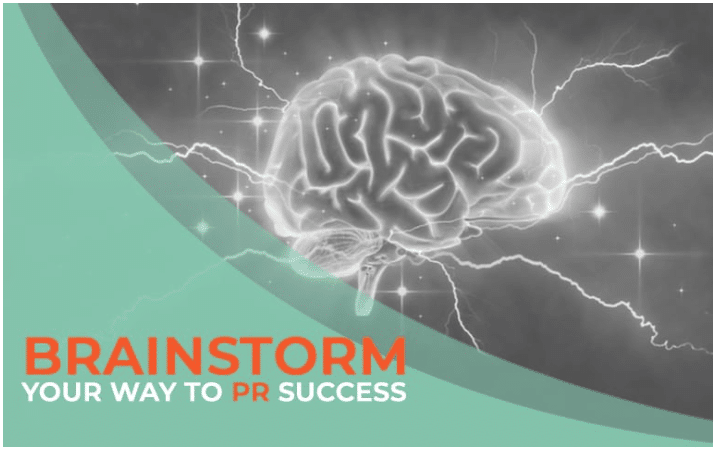With the ever-changing tide of the communications industry, it can be difficult to say that the art of PR and marketing is ever truly mastered. PR has transitioned from physically clipping media client coverage from the pages of magazines and newspapers to tweeting client wins.
While the future of how we communicate may be uncertain, PR will always require an endless source of team effort, creativity, and strategic thinking.
During the creative process, there is a lot to be said when it comes to brainstorming. I’ve often found that brainstorming improves your problem solving and critical thinking skills, both individually and as a team, and some of my best ideas have come from these sessions. This practice allows for an open dialogue because team members feel more open to sharing thoughts with each other and also seeking out advice. Simply put, it’s an important part of the PR method.
With this, brainstorming should never be attempted without a plan in place. The practice should be approached with a strategy and an end goal in mind, because, to be frank, time is always of the essence.
Here are a few tips to keep in mind when organizing a brainstorming session:
Identify goals
In my experience, I’ve found that when teams go into a session without set and defined goals two things happen: (1) The conversation is disjointed, (2) The result is fruitless and a waste of time. Being clear is essential because it allows the team to approach their goal in a fresh and new way. What are your reasons for brainstorming? Set this objective before starting to ensure everyone involved is on the same page. Have you already identified a strategy and are you looking for the best tactics to implement? What is the problem you are aiming to solve? These questions will guide the entire process, so avoid overlooking its significance.
Diversify
Diversity and inclusion is a topic that applies to any group setting. Honestly, it is a necessity in all aspects of a team, especially in a creative brainstorming session. We’ve found much success in our agency by considering the group dynamic in gatherings such as these. The ideation process has proven effective more times than not because we ensure the team is balanced with those who have varied perspectives, as well as those who are extroverted and introverted. It’s identical to picking a starting five on a basketball team; pick those with specific roles who can add value in a unique, yet impactful way.
Prep the group
One of my mentors once said, “If you stay ready, you won’t have to get ready.” He was right, and it’s one of the vital factors to prepping for a brainstorm session. Reading the latest reports on relevant, topical subjects and analyzing the competitive landscape gives you and your firm an advantage because you are not starting from scratch, allowing the team to reach their greatest potential. Don’t forget: Doing research on your client’s competitors and industry pain points allows your team to move forward at a much faster pace because everyone came to the table prepared.
Change the scene
Taking the time to get outside of the office and embrace a new environment has proven vital in our brainstorming process. Whether it’s spending time literally walking through the details at a future activation site or setting up lunch at a new restaurant in a growing part of the city, I’ve found the creative juices often flow when you leave your comfort zone. Believe it or not, new sights and sounds can create a pathway to new suggestions.
Appoint a moderator
While everyone with a seat at the table should be allowed to speak freely, the meeting has to always flow in the direction of progress, which is why a moderator is key. Moderators help keep the group on task and not on tangents. While it is great to bounce ideas off one another, make sure there is a moderator to ensure all concepts are moving forward.
Set a time limit
There is a thing such as too much time. Take this into consideration when organizing your next brainstorm. Research, along with any preliminary ideas or questions, should be a part in planning how much time to allot to the meeting. We use our calendar invites down to the minute when it comes to collaborative meetings so we can stay on track. It’s a simple but very useful practice to implement. FYI: Don’t be afraid to reconvene; Rome wasn’t built in a day and sometimes you have to revisit a session to be sure of the direction your team is looking to move toward.
Write it down
One of the simplest, yet most powerful habits is writing objectives and outcomes down. Keeping track of ideas, and themes, is important and by writing things down, your thoughts are able to be defined, and refined, if necessary. This is true especially with a group of creatives, during a creative process, where inspiration is firing on all cylinders.
Brainstorming should always be a positive and progressive experience, just remember the purpose of the brainstorm because the tactics and takeaways that occur during your time will translate into your final PR strategies and winning pitches.
This article originally appeared on the Media Frenzy Global blog; reprinted with permission.



